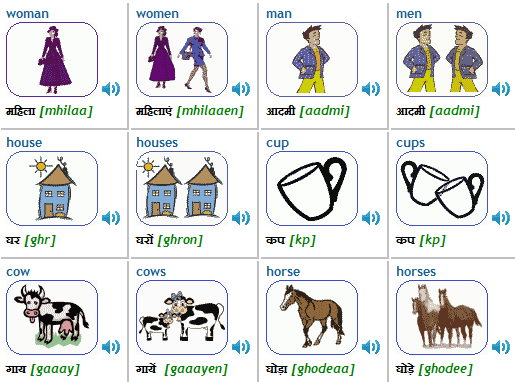In today’s lesson we’re going to cover just one single word (how easy can one lesson be hey!). The word we’re going to look at is भी bhee. Have you ever seen it or heard it before? It’s a really common word so I bet you have! As usual there’s a few questions at the end to test your knowledge from today so give them a go once you’ve finished!
So what does भी bhee mean and how do we use it? Well it’s actually really simple, it means ‘also’ or ‘too’ and we use it just like we would in English! Let’s have a look at a simple example to start with…
दीपा छोटी है deepaa chotee hai - Deepa is small
अमित भी छोटा है amit bhee chotaa hai - Amit also is small
Can you see what we’ve done here? We’ve simply put our new word भी bhee right after अमित Amit to tell us that Amit, as well as Deepa, is short. Does that make sense? Read through a few times if you’re confused. Ready for another example?
यह कछुआ हरा है yeh kachuaa haraa hai - This turtle is green
ये अंगूर भी हरे हैं ye angooj bhee hare hain - These grapes too are green
Can you follow this example too? We first say the turtle is green. Then we put भी bhee right after ये अंगूर ye angoor - These grapes, to show that the grapes, as well as the turtle is green. It’s just like the last example! Do you think you’ve got it now? Leave a question below if you’re confused. Do you want to see one more simple example like this?
मैं अमेरिका से हूँ main amerikaa se hoon - I am from America
मेरी पत्नी भी अमेरिका से है meree patnee bhee amerikaa se hai
- My wife is also from America
Can you see what we’ve done this time? Great! Now भी bhee can also be used in a slightly different way which often confuses people! Let’s look at an example of this…
शान्ति लंबी है shaanti lambee hai - Shanti is tall
वह बहुत होशियार भी है voh bahut hoshiyaar bhee hai
- She is very clever too
Can you see what we’ve done here? It’s actually a little different from before! In the first sentence we say ‘Shanti is tall’. Then in the next sentence we put भी bhee right after बहुत होशियार bahut hosiyaar - Very Clever to mean; ‘She is very clever as well as being tall’. Putting our word भी bhee in the right place of a sentence is very important! Ready for one more example?
यह ट्रेन लाल है yeh tren laal hai - This train is red
यह काफ़ी पुरानी भी है yeh kaafee puraanee bhee hai
- It is also quite old
Can you see what we’ve done? We put भी bhee after काफ़ी पुरानी kaafee puraanee - quite old, to mean; The train is quite old as well as being red.
Do you think you’ve got it now? I told you it was simple! Can you now try and translate the following few sentences using what we’ve just learnt? Give it a go. Remember the most important thing is to get भी bhee in the right place! If you have any questions at all then please just leave a comment below.
She is from India. She is also beautiful.
My room is clean. Your room is clean too.
This book is big. That book is also big.
My bed is big. It is also very comfortable (आराम aaraam - Comfortable)
So why not give it a try, just leave your answers in a comment below and I’ll let you know how well you’ve done. Don’t forget to also leave me any questions if you have them!





























